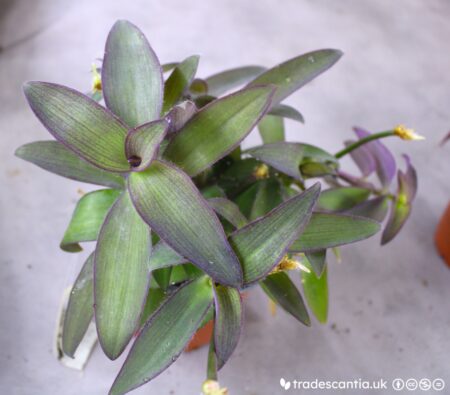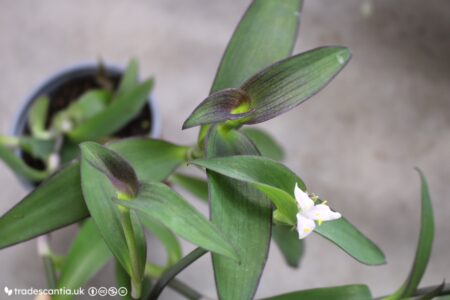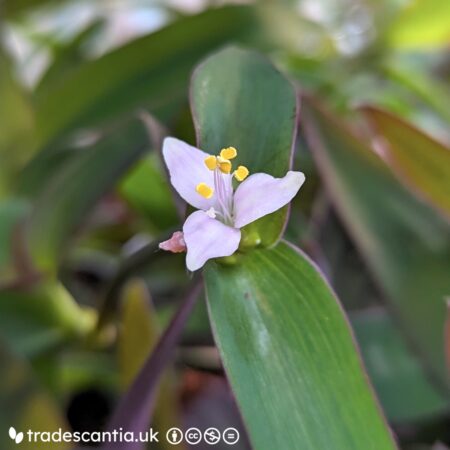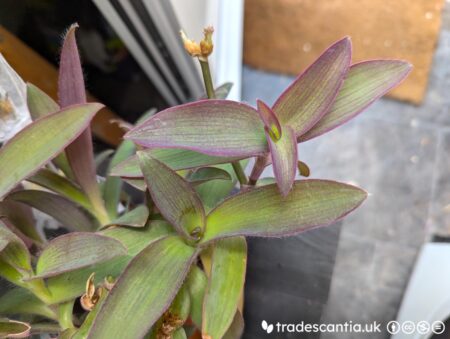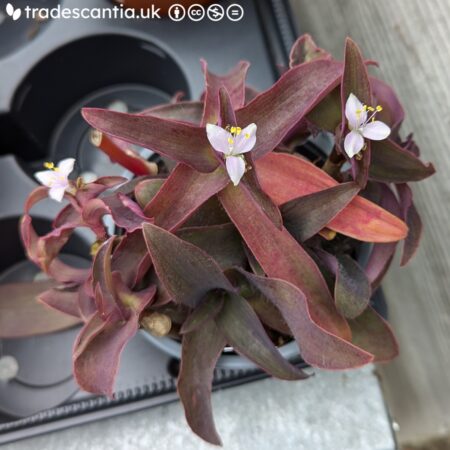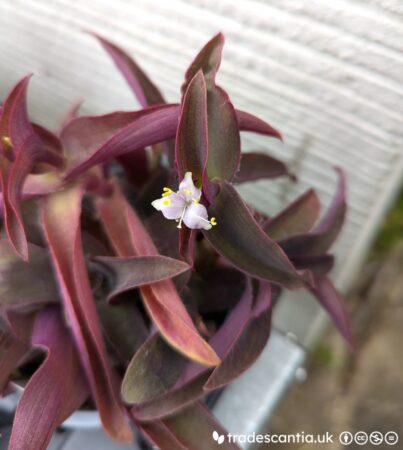Details
| Full name | Tradescantia pallida ‘Raindrop’. |
| Name status | Accepted, the valid name for a unique cultivar. Registered in 2024, the name will be established once published in hardcopy (Brickell et al., 2016, Art. 27.1). |
| Origins | Open-pollinated seedling bred in 2023. The seed parent is Tradescantia pallida ‘Purpurea’. The pollen parent is another unknown T. pallida cultivar. Named by Rowan Violet for the shape of the flower petals. Bred, registered, and introduced by Avery Rowe in Machynlleth, Wales, UK. |
| Classification | The species Tradescantia pallida is sometimes labelled with its botanical synonyms Setcreasea pallida and Setcreasea purpurea. |
| Legal protection | None. |
| Availability | Newly introduced in the UK. |
Description
Described with reference to the RHS Colour Chart (6th Edition; 2019 reprint).
| Species | Tradescantia pallida. |
| Growth habit | Growth is initially fairly upright, but long stems will eventually start to trail. In intense light it will stay compact and upright for longer, whereas in moderate light it will trail more easily. |
| Foliage | Stems are 4-7mm thick with internodes 1-9cm long – usually shorter at the base and elongating towards the top of flowering stalks. Stem colour is greyish olive green (NN137B) to dark greyish reddish brown (200A). Leaves are narrow ovals, 9-15cm long and 2-3cm wide. The upper surfaces are moderate olive green (137A), becoming edged and then stained with dark purplish red (N79A) or greyish purple (N77A) in intense light. The undersides are pale green (N138C) to dark purplish red (N79B) in intense light. Leaf sheaths range from light yellow green (145C) to greyish purplish red (N77B). The upper and lower leaf surfaces are sometimes scattered with white hairs, generally more concentrated at the edges. |
| Flowers | 20mm across. Petals are very pale purple (84D), with a barely-discernible white stripe down the centre. The petals are narrow and teardrop-shaped with pointed tips. Stamen filaments and style are white or very pale purple, anthers are yellow, and stigma is white. |
| Comparisons | Compared to ‘Green Moon’, the foliage is very similar but the flowers are extremely pale with narrow pointed petals. |
References
Brickell, C. D., Alexander, C., Cubey, J. J., David, J. C., Hoffman, M. H. A., Leslie, A. C., Malécot, V., Jin, X. (2016). International Code of Nomenclature for Cultivated Plants. PDF link.

